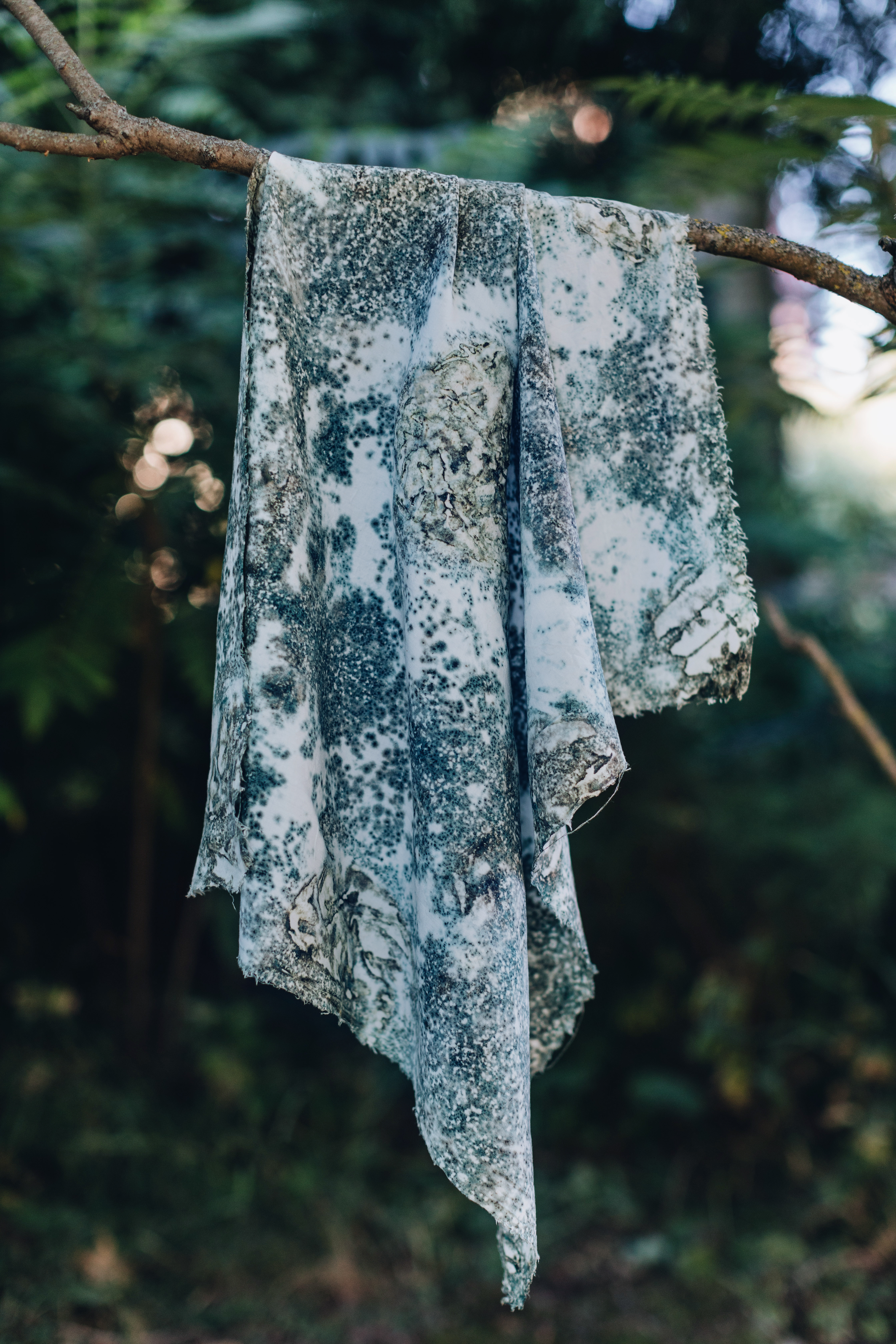Myco Colour
MA Material Futures,
Final year project,
Central Saint Martins
2021
Special thanks to Stephanie Stange from Technische Universität Dresden for helping to understand the organism.
Myco Colour is sustainable
textile dyeing process of growing pigment producing fungi directly on materials.
Green elf cup fungi can release a turquoise pigment into the object it is growing on- a property that holds a promise to completely eliminate the use of all chemicals in the textile dyeing process. Blue-green pigment produced by the mushroom has shown equal colourfastness measurements to commercial dyes allowing to imagine future where fabric is coloured solely by living organisms.
This method has the potential to revolutionise not only industrial material finishing methods but also the cultural perception of colour, and could renew our connection with and appreciation of nature.
Green elf cup fungi can release a turquoise pigment into the object it is growing on- a property that holds a promise to completely eliminate the use of all chemicals in the textile dyeing process. Blue-green pigment produced by the mushroom has shown equal colourfastness measurements to commercial dyes allowing to imagine future where fabric is coloured solely by living organisms.
This method has the potential to revolutionise not only industrial material finishing methods but also the cultural perception of colour, and could renew our connection with and appreciation of nature.



It is no secret that the textile industry is among one of the most polluting industries in the world. Furthermore, textile finishing methods – including colouring – are estimated to be responsible for one fifth of industrial water pollution. It is the harsh chemicals, the heavy metals, the large amounts of water that need to be used and the unregulated wastewater disposal that is creating this problem.
But what if there is a way to achieve colour by nurturing nature instead of destroying it?
The project started with a brightly coloured blue-green piece of wood found on a forest floor. The bit of wood had been coloured by a mushroom called Blue elf cup that is surprisingly common in UK forests and its use in woodwork goes back for centuries.
This fungus can release a turquoise pigment into the object it is growing on- a property that holds a promise to completely eliminate the use of all chemicals in the textile dyeing process. When growing colouring fungi directly on materials, only two components are needed: simple nutrients as a food source and fungi. Blue-green pigment produced by the mushroom has shown equal colour fastness measurements to commercial dyes allowing us to imagine a future where fabric is coloured solely by living organisms.
Future textile printing will rely on growing multiple organisms/colours and applying them on materials in life-friendly conditions. This will enable designers to create half-controlled designs, where the human selects the starting point of growth and food source, but the mushroom creates the rest of the pattern.







